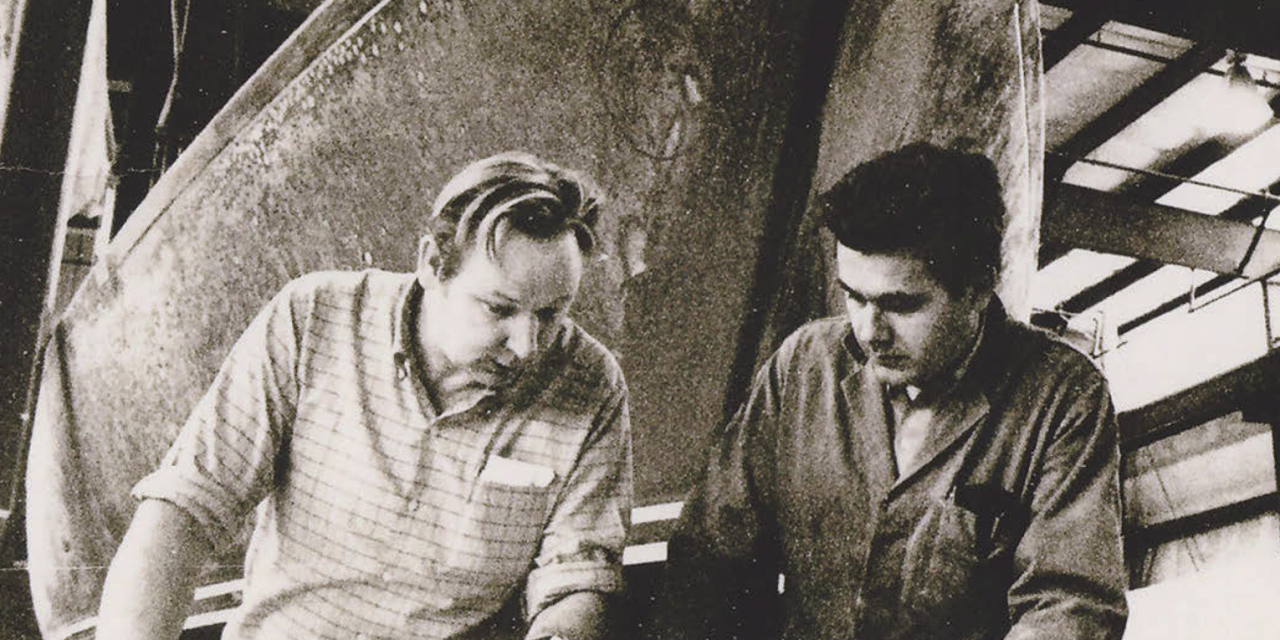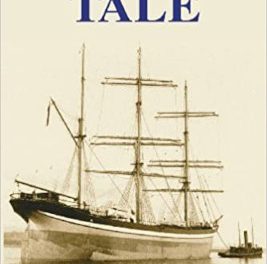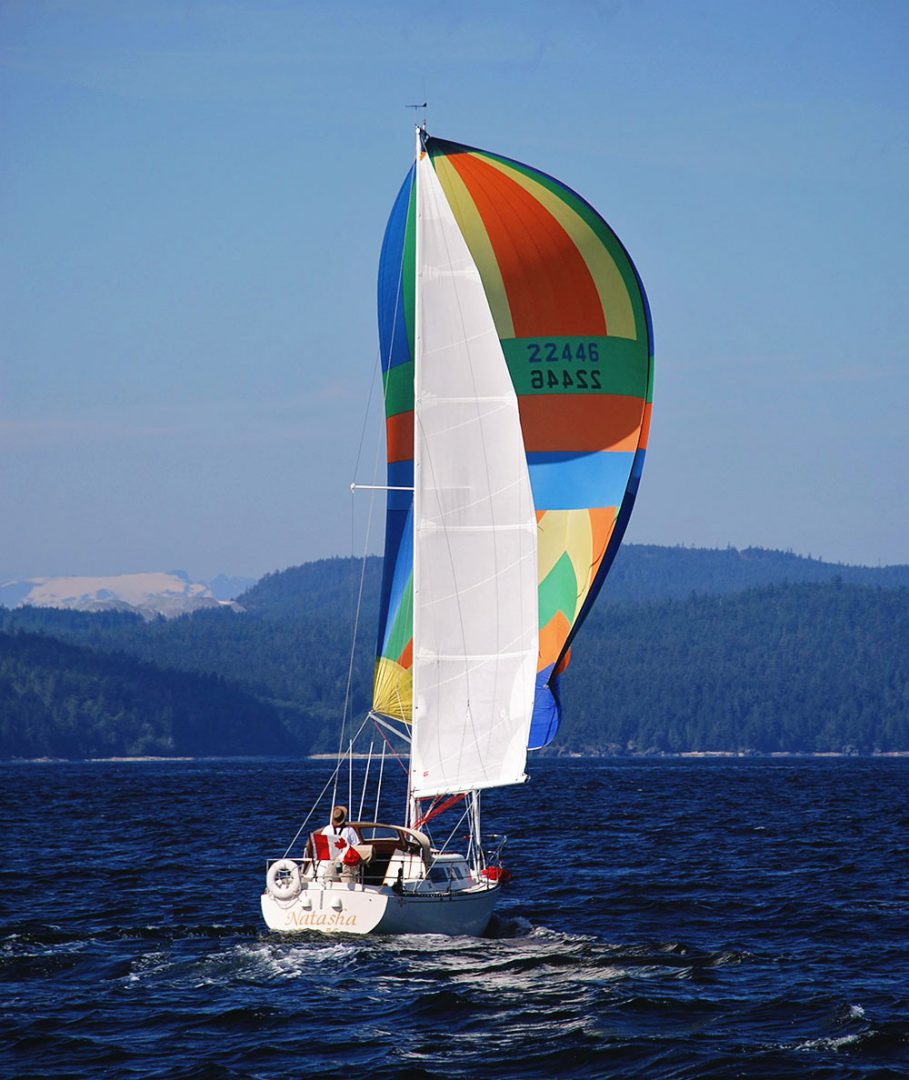
In 1972, The Klackos’ spar shop occupied a lot of space at the C&C Custom Division. PHOTOS COURTESY OF OAKVILLE BEAVER AND MARTIN AND DANNY KLACKO
When you break a mast or need a new spreader base or just want to have a fresh coat of paint applied to an old aluminum mast, where can you go? What if you want a new cockpit arch, bow rollers, pulpits, or fixed rails? For many years on Lake Ontario and well beyond, the answer has been obvious — the Klacko brothers.
Martin and Danny Klacko were in on the ground floor when C&C Yachts was formed in 1969 and came by their expertise through building masts for the C&C Custom Division in the 1970s and ’80s. That expertise and years of experience eventually led to the development of two separate companies. Danny and his crew at Klacko Spars have specialized in replacing and updating masts for good old boats for many years; Martin, his older brother, has produced custom stainless-steel and aluminum metalwork at Klacko Marine for just as long.

Erich Bruckmann and Martin Klacko pore over a blueprint at the C&C Custom Division in 1977; A C&C 42 is in the background.
The Klackos’ path to careers in metalworking began at high school in Welland, Ontario, at the Lake Ontario end of the Welland Canal. At the time, neither brother saw university in his future, but Welland High exposed them to training in a variety of vocations — wood-working, auto mechanics, electrical, and metalworking. Martin had always been fascinated with metals, marveling at the ability of one alloy of steel to cut another. This would eventually lead him to study metallurgy, but the immediate result was a sound education in metalworking and a budding hobby in woodworking. Danny, three years younger, was intrigued with auto mechanics, but Martin persuaded him to go into metalworking.
After graduating from high school, both found good work in their chosen field. Martin earned a degree in metallurgy from Ryerson Polytechnical in Toronto and was recruited by a large mining company to work in its research center in Mississauga, Ontario.
One day, a young co-worker began asking Martin specific questions about fabricating stainless steel. It transpired that this fellow was moonlighting for a new boatbuilder in Oakville named Erich Bruckmann, who was building a radical racing sailboat called Red Jacket. Erich was about to move into a larger facility to begin series production of a similar design, the Redline 41, and needed a lot of custom stainless-steel and aluminum hardware. The younger fellow bowed out of the picture and Martin ended up working for Erich evenings and weekends, fabricating fuel and water tanks, pulpits, foot blocks, and other custom fittings for the new boats.
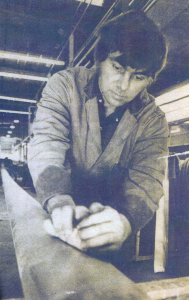
Danny Klacko then.
A symbiotic relationship
Martin’s main reason for moonlighting was to earn extra money to buy a house for his new wife and himself, but the more he got into the boat work, the more he enjoyed it. He had always wanted to have his own business, and this looked like a great place to start. So, with a handshake, Martin Klacko and Erich Bruckman struck a deal. Martin could have a dedicated area in Erich’s new facility for his machine shop, rent-free. Erich would also pick up the overhead expenses, including utilities and phone. All Martin had to do was make Erich’s needs his first priority. Martin could do whatever he wanted with his leftover time, even supply metalwork to competing boatbuilders, of which there were many in Southern Ontario in the 1960s.
At the time, the spars for Bruckmann Manufacturing were being made by George Ward, a small company in Toronto, and later by Belleville Marine, the company that would eventually become a founding member of C&C Yachts. Because these spars inevitably required a good deal of additional work, and some of the Belleville masts tended to twist under load due to “soft” welds, Martin brought Danny into the business to focus on manufacturing the spars. As a result, the two Klackos provided all the masts and custom hard- ware for the boats shipped from what would become — with the formation of C&C Yachts in 1969 — the C&C Custom Division. Those boats included all the C&C 43s, C&C 50s, and C&C 61s. The Klackos also built the replacement rig for Red Jacket, as well as spars for custom one-offs, such as Bonaventure, and the Canada’s Cup winners and contenders Manitou, True North, Bagatelle, Merrythought, Mirage, and Marauder. Not a bad legacy! This symbiotic relationship between Erich Bruckmann and the Klacko brothers would last 25 years and deliver some remarkable products.
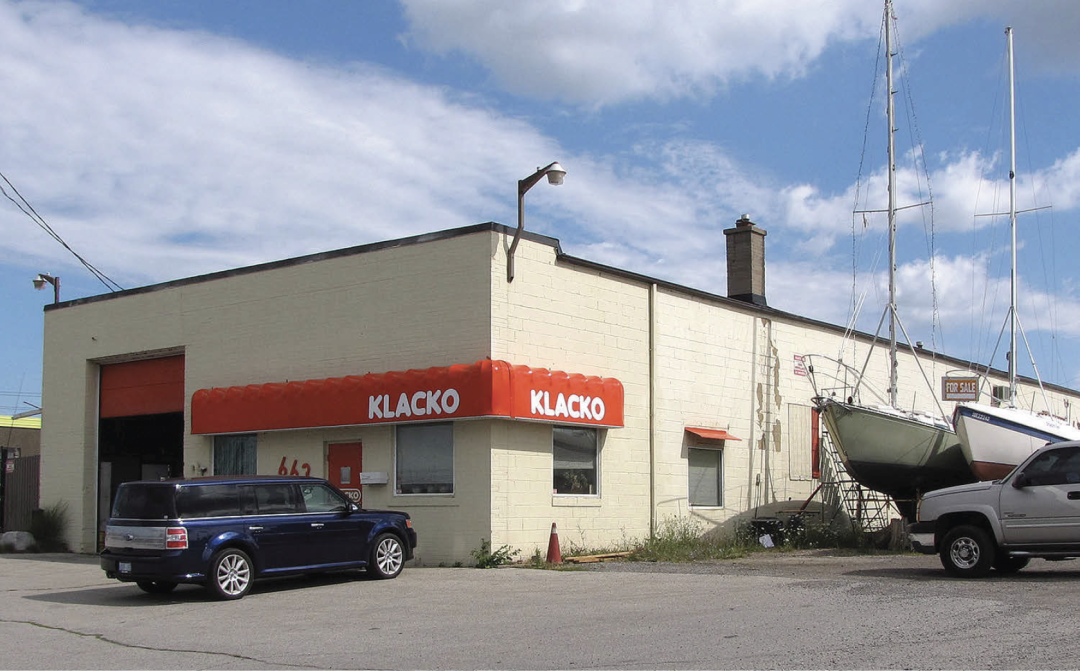
The present-day Klacko Spars shop in Oakville, Ontario.
A period of growth
After the formation of C&C Yachts in 1969, business increased exponentially for the Klackos, who concentrated on producing custom metalwork and all the spars for the larger boats coming out of the Custom Division. The spars made by the Klackos were always tapered and had welded integral aluminum mastheads and welded spreader bases. The production division built its own spars in the former Hinterhoeller Yachts facility in Niagara-on-the-Lake and in Middletown, Rhode Island. These “production” spars differed from the Klackos’ spars in that they involved no welding, were not tapered, and used cast-aluminum masthead units and spreader bases that were fastened with machine screws.
During my 15 years with C&C Design, I produced a lot of the drawings for all these spars for both divisions until we started buying spars from outside, beginning with the Canada’s Cup challenger Evergreen in 1978. However, if the drawing wasn’t yet ready, that never held up the Klackos. If a stainless-steel water tank had to be built, it got built, drawing or no drawing. And Martin and Danny were never bashful, but always good-natured, about pointing out to us that the objects we young, often green designers envisioned occasionally could not be built as drawn.

As well as spars and fabricated hardware, the Klacko brothers produced castings not just for C&C Yachts but also for Ontario Yachts, Hinterhoeller Yachts, and others. Among the custom metalwork they made for the C&C production line in the 1970s and ’80s was the distinctive C&C jam cleat. Martin Klacko’s Klacko Marine fabricates, among other things, cockpit arches. PHOTO COURTESY OF KLACKO MARINE WEBSITE
Martin’s interest in the process of casting components in aluminum and zinc-based white metal came to the attention of Rod Gerrard, whom George Cuthbertson had hired to apply industrial design to the process of creating interior and exterior components of C&C’s custom and production boats. Rod began designing new cast-aluminum stanchion bases to fit on the extruded aluminum toerail, as well as powder-coated cast corner details for interior joinery. I designed a cast-aluminum jam cleat for cockpit winches that was then used on all C&C production boats in the 1970s. The Klacko shop in C&C Custom was soon producing a variety of castings for all C&C boats, custom and production.
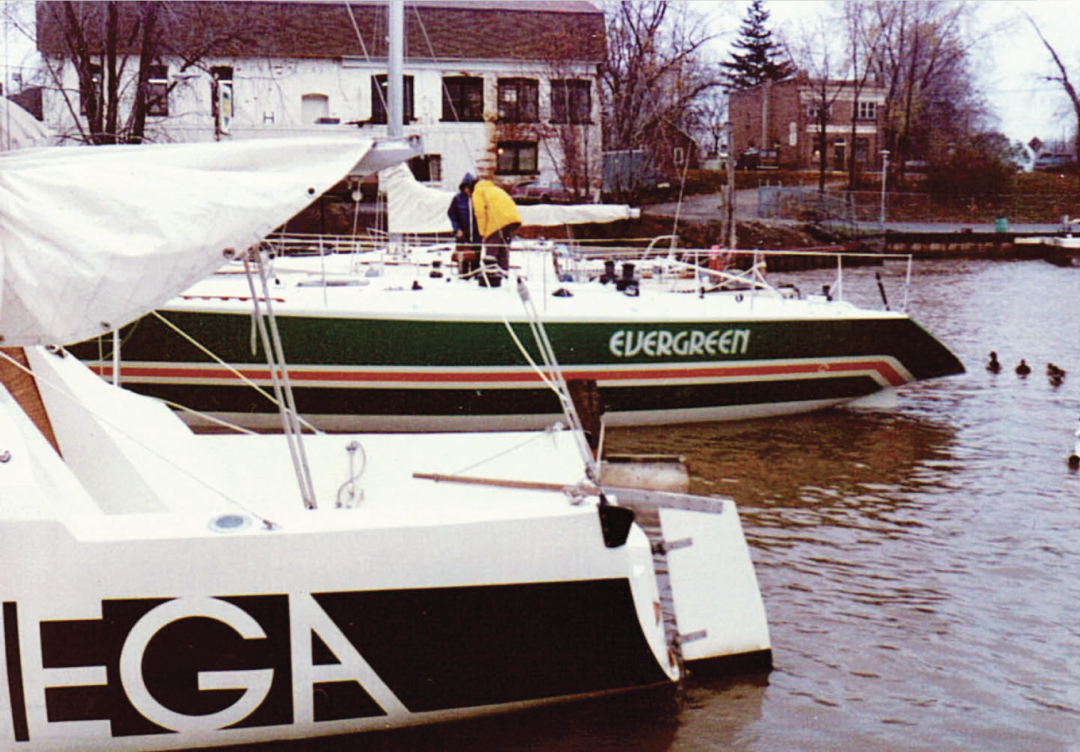
A rare photo of the aluminum prototype for the C&C Mega 30 shows her in 1978 in Bronte Harbour, Oakville, next to another product of C&C Custom Division, the Canada’s Cup winner Evergreen. PHOTO BY WILSON YATES
Changes at the helm
This more formal relationship between Erich Bruckmann and the Klacko Brothers came to an end after Erich, the last remaining of the official founders, left C&C Yachts in 1986. By then, most of the racing masts were being produced by specialized outside vendors, such as Tim Stearn at Stearn Sailing Systems.
Air Ontario had acquired C&C Yachts in 1981. The new management didn’t see the same value in the relationship with the Klackos that Erich Bruckmann had and deeply resented its in-house machine shop being allowed to make products for competitors. This led to a parting of the ways. The Klacko brothers relocated their business to a shop on Third Line in Oakville in the late 1980s. The C&C Custom Division closed its doors soon after. It was the possibility of such a closure that precipitated the Klackos’ move, because Martin did not want to see all his equipment and machinery (most of it custom-made) locked inside the fences of a company in receivership.
The purchase of the premises in Oakville presented a financial challenge that they partially mitigated by renting out portions of the building. Cliff Howard moved his rigging shop from downtown Toronto to be closer to the Klackos, and other C&C Custom alumni established mechanical and electrical subcontracting ventures under the same roof. All these businesses have since gone and Klacko Spars now occupies the entire building.
Soon after the relocation, Danny and Martin divided the company. Klacko Spars, under Danny’s leadership, worked out of the Third Line location, specializing in spars. Klacko Marine, under Martin’s direction and focusing on custom stainless-steel and aluminum fabrication, moved to a specially built workshop at Martin’s home in Grimsby. Both brothers maintained an active interest in the hobbies they had picked up so many years before at Welland High, Martin in woodworking and Danny in restoring vintage Fargo and Dodge trucks.
The future
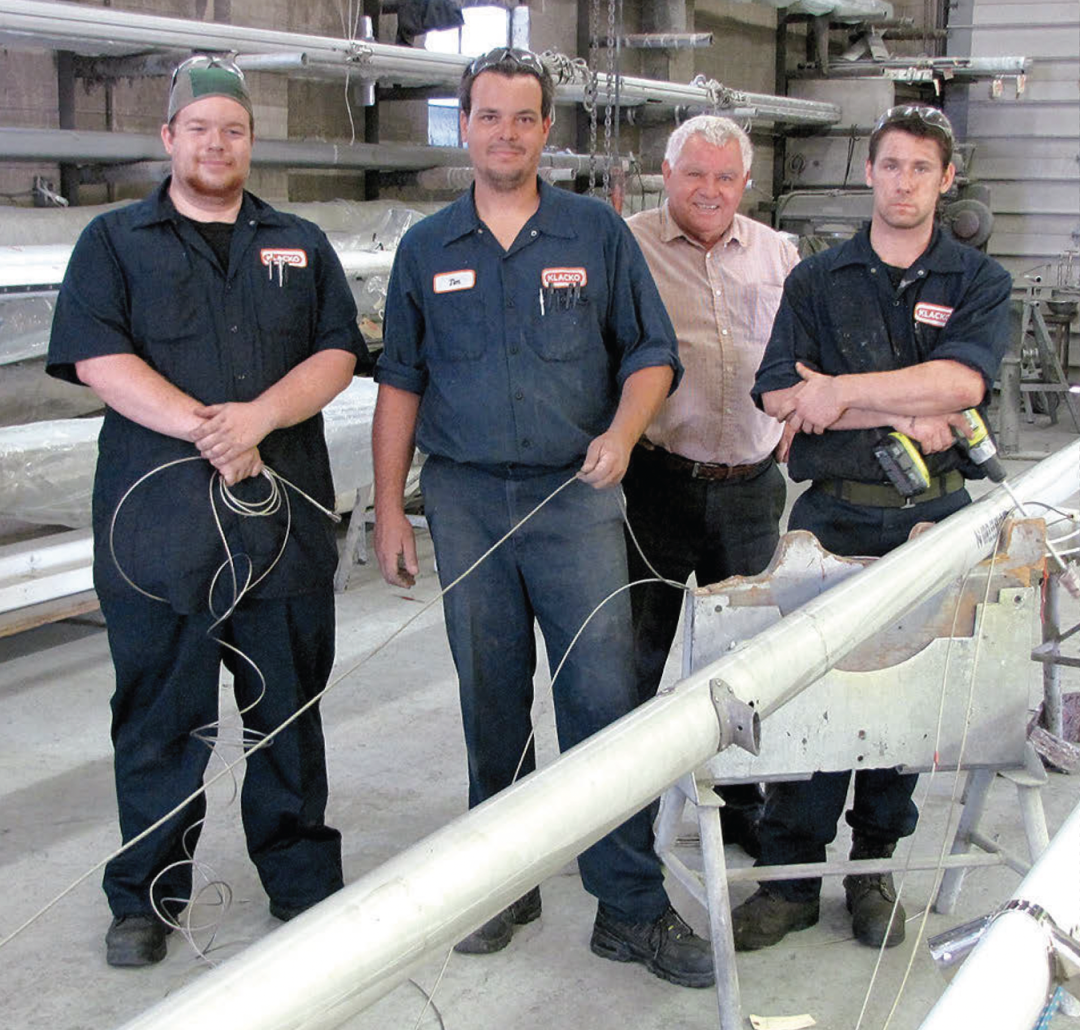
Alex Mcaulay, Tim Doel, Danny Klacko, and Nolan Steele, on the floor at Klacko Spars.
Martin is now officially retired, having sold Klacko Marine to Doug Gierula, who was still in high school when he started working with Martin. Doug, who has degrees in biochemistry and mechanical engineering, relocated the company to nearby St. Catharines, Ontario. He has brought his metal- working business into the 21st century by using 3-D design programs, such as Rhino and SolidWorks, to develop new products. His speciality is cockpit arches.
Danny has brought his daughter Dannial and son-in-law Tim Doel into the spar business so it can carry on after Danny’s much-discussed retirement. Klacko Spars still occasionally builds spars for new boats as well as new masts for older boats. Working closely with local designer Steve Killing, Klacko Spars has been building new masts for the large fleet of vintage 8-Meters at RCYC. And because older masts need to be replaced or repaired, the shop is never empty — come springtime it’s rather full. In addition to masts, Klacko Spars fabricates a large variety of stainless-steel and aluminum products, ranging from davits to water tanks, and stocks a large number of raw castings waiting to be turned into finished components when required.

Danny is restoring another Dodge truck.
Reflections on the past
Klacko Spars and Klacko Marine have never advertised, but have succeeded through word of mouth and their good reputation. Over four decades in the boating business, the Klackos have accumulated a wide variety of loyal customers with whom they have established lifelong relationships.
One of those customers is David Howard, past commodore and long- time member of the Royal Canadian Yacht Club in Toronto. Last summer, he decided it was time to recognize the long relationship between the Bruckmanns and the Klackos. David had recently been working with Martin and Danny Klacko and Erich Bruckmann’s son Mark on the restoration of an old Dragon that David had acquired in remembrance of Tomahawk, the Dragon he had sailed in the 1956 Melbourne Olympics. It occurred to David that he had been dealing with Klackos and Bruckmanns for 55 years — most of his sailing career. He felt it was long past due that he should honor that relationship and make newer sailors aware of the debt all sailors owed to these individuals who worked behind the scenes to create the products that brought such joy to our lives.
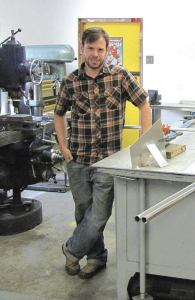
Doug Gierula bought Klacko Marine from Martin Klacko.
David organized a garden party on the front lawn of RCYC with a number of the boats that had benefited from the Bruckmann/Klacko collaboration lined up on the front docks. The well-attended event was a very appropriate way for sailors to say “thank you” to the brothers Klacko and to the Bruckmanns, father and son.
An aluminum Mega
After working in the boating business for so many years, the Klackos were sometimes approached about building welded aluminum boats. From observing Erich Bruckmann as he managed the wide range of skills involved — mechanical, electrical, plumbing, woodworking, and hardware installation — they knew that boatbuilding was not for them. They did, though, make one notable exception.
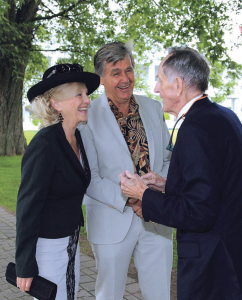
David Howard welcomes Martin Klacko and his wife, Bette Pender, to the garden party he organized at RCYC. PHOTO BY JIM DAWSON OF PHOTOWORK.CA
In 1977, C&C was developing the Mega 30 that is so dear to the leadership of this magazine. The concept for this boat was so different from C&C’s other products that the company decided to test it with a prototype. Building the hull in fiberglass would require tooling, or at least a plug and a lot of fairing, so when Martin Klacko suggested that it could be built in less time and at a lower cost in aluminum, C&C management jumped at the possibility. In very short order, they had an aluminum prototype, and the rest, as they say, is history.

